Hanok Guesthouse Dongchonchae [Korea Quality] / 한옥 게스트하우스 동촌재 [한국관광 품질인증/Korea Quality]
732.4M 2021-03-26
21-10, Jahamun-ro 11-gil, Jongno-gu, Seoul
Built in 1939, Dongchonchae was designated as Seoul Well Hanok by the Seoul Metropolitan City in 2016. In 2020, this hanok (traditional Korean house) received the Certificate of KOREA QUALITY from the Korea Tourism Organization in the Heritage Hanok field in recognition of its historicity and quality of services. Dongchonjae is located in the western side of Gyeongbokgung Palace, at Seochon. When one passes through its main gate, one sees the yard, with anchae (women's quarters), sarangchae (men's quarters), and byeolchae (detached quarters) surrounding the plot. Anchae has four rooms, daecheong (wood-floored main hall), a kitchen, and a restroom. One of the rooms is used for tea ceremonies as well. Outside of the sarangchae and byeolchae, which are the living spaces for the owners, visitors have free access to the numaru (raised open floor) and the yard. The anchae’s rooms “Bom” and “Yeoreum” can accommodate 2 to 3 adults each, while the rooms “Gaeul” (Tea Room) and “Gyeoul” are optimal for two. The building is rented out as a whole, so no more than one group may stay in the building at any given time. Standard occupancy is four persons, and eight is the maximum number. There are two restrooms, one within the anchae building, one out in the backyard.
Cooking is not allowed in the kitchen, but guests are free to bring in outside food. Experience programs on offer include nighttime exploration of Seoul City Wall, tea ceremony, folk songs, and rice cake making. Additional payment is only required for rice cake making. Guests may choose between two types of complimentary breakfast: Korean, which comes with rice, soup, and three side dishes; and Western, which comes with bread, salad, and coffee. There are a 100-in screen and mini projector for film watching in the yard or daecheong. Towels, toiletries, hair dryer, bottled water, traditional tea, and capsule coffee are included. The kitchen is equipped with kitchen utensils, a microwave, and a coffee pot, enough for instant foods. Guests also have access to refrigerator and washing machine
NUHADANG [Korea Quality] / 누하당 [한국관광 품질인증]
770.9M 2020-09-10
49-7, Pirundae-ro, Jongno-gu, Seoul
010-9692-1330
Guesthouse Nuha is a ‘hanok’ or traditional Korean house consisting of four guestrooms located in Nuha-dong, Seochon (west of Gyeongbokgung Palace, Jongno, Seoul) where many Confucian scholars and artists lived during the Joseon Dynasty.
Exuding a refined atmosphere, Guesthouse Nuha is very popular among not only domestic visitors but also foreign tourists who want to experience the flavor of Korea in a cozy hanok. All four guestrooms (An-bang, Sarang-bang, Geul-bang, and Byeol-dang) are covered with eco-friendly hanji (traditional Korean paper handmade from mulberry tree) wallpaper, and are equipped with a thick cotton-wool comforter and pillows imbued with the scent of Hinoki cypress tree to help guests relieve their fatigue.
Breakfast is served free of charge. Guests can also experience traditional Korean culture here, such as playing a Korean musical instrument (janggu or double-headed drum), playing a game of yut in the yard, or wearing hanbok (traditional Korean clothes). Although a local bus service passes through the village, it is highly recommended to take a quiet leisurely around the area.
GOGHI (고희)
771.7M 2021-03-26
17, Jahamun-ro 12-gil, Jongno-gu, Seoul
+82-2-734-4907
A good café to have a meal as it has a brunch menu as well as drinks. This cafe is located in Jongno-gu, Seoul. The representative menu is americano.
Mercado Yeongcheon de Dongnimmun (독립문영천시장)
774.0M 2023-01-17
Tongil-ro 189-1, Seodaemun-gu, Seúl
Daesungjip (대성집)
782.1M 2021-03-27
5, Sajik-ro, Jongno-gu, Seoul
+82-2-735-4259
Daejungjip has specialized in Dogani tang (ox knee joint soup) for 60 years. Customers can feel a simple and familiar ambience at the restaurant.
Librería Kyobo (교보문고)
791.6M 2021-04-22
Jong-ro 1, Jongno-gu, Seúl.
La librería Kyobo es una librería emblemática de Corea. Se encuentran clasificados por temas aproximadamente 2,3 millones de libros para que todos puedan encontrar el libro que necesitan con facilidad. Este lugar está siempre lleno de gente leyendo y buscando libros. Los fines de semana, personas de todas las edades visitan este lugar. Siendo la librería más grande de Corea, también realiza varios eventos, uno de ellos es el encuentro del público con los autores del “libro del mes”. La librería Kyobo también cuenta con una tienda de productos con personajes animados, una disquería donde podrá comprar y escuchar sus discos favoritos y tienda de artículos de escritorio donde encontrará todo lo que necesita. La sección de libros extranjeros es muy popular, ya que se encuentran variadades de libros escritos en muchos idiomas y puede hacer pedidos de libros que no estén disponibles en el momento.
Luii (루이)
799.3M 2019-11-19
40, Sejong-daero 21-gil, Jung-gu, Seoul
+82-2-736-8889
Luii is a Chinese restaurant operated by a veteran chef with extensive experience in Chinese cuisine. The restaurant has several rooms of different sizes to accommodate various events. It also has a VIP room for more private gatherings.
Mercado Tongin (통인시장)
805.0M 2024-01-24
Jahamunro 15-gil 18, Jongno-gu, Seúl.
Pabellón Jungmyeongjeon (중명전)
806.4M 2021-04-05
Jeongdong-gil 41-11, Jung-gu, Seúl.
Este sitio histórico se encuentra ubicado por detrás del palacio Deoksugung, cerca del Teatro Jeongdong. Fue la biblioteca real, construido durante el período 1897-1901, por el arquitecto ruso Seredin Sabatin, y consta de 3 pisos en total y es de estilo occidental. Su nombre original fue Suokheon. Después del incendio del palacio Deoksugung en el año 1904, fue utilizado como la oficina administrativa del rey y la sala de audiencia de las delegaciones extranjeras, y también fue el lugar trágico en donde se firmó el Tratado de Eulsa (tratado desigual en el que Corea fue ocupada y declarada protectorado japonés).
En un principio, el pabelló Jungmyeongjeon formaba parte del palacio Deoksugung, pero con el levantamiento del muro de piedra (conocido como el “Doldamgil de Deoksugung”), dejó de serlo. Es una de las primeras construcciones contemporáneas de Corea, pero por el incendio de 1925, solo ha quedado en pie la pared del edificio. Después de la independencia del dominio japonés (15 de agosto de 1945), ha tenido varios usos y dueños diferentes, hasta que en septiembre del 2006, el derecho de propiedad del inmueble pasó a la Administración de Patrimonios Culturales, y finalmente, en febrero del 2007, fue declarado Sitio Histórico Nº 124.
Museo de Arte Ilmin (일민미술관)
817.0M 2021-03-18
Sejong-daero 152, Jongno-gu, Seúl
Este museo está administrado por la Fundación Cultural Ilmin, y fue establecido en homenaje al maestro Kim Sang-man (fundador y presidente honorario del periódico The Dong-A Ilbo), quien se esforzó durante toda su vida para fomentar el desarrollo mediático y cultural.
Se encuentra ubicado en el interior del antiguo edificio del periódico The Dong-A Ilbo. Se inauguró como un centro cultural y en diciembre de 1996 bajo el nombre de Museo de Arte Ilmin. En 2001, se realizó una renovación, y en febrero de 2002, con la construcción de 2 grandes salas de exposición, tomó el aspecto actual.
El atrio del museo, que está diseñado con vidrios y acero, conecta la calle Gwanghwamun-ro con el interior del museo. Su elegancia contemporánea demuestra el desarrollo del lugar. Al mismo tiempo, es utilizado como el lugar en donde los visitantes reciben el servicio informático necesario para recorrer el museo con facilidad. En este lugar artístico podrá encontrar la Colección Ilmin, que tiene 430 piezas artísticas que corresponden a las épocas de Goryeo hasta la actualidad, 1.200 obras consignadas por el periódico, y 100 piezas de pintura contemporánea. La Colección Ilmin está compuesta por pinturas, piezas de cerámica, etc., recolectadas por el fundador, piezas que habían sido incorporados en los periódicos y revistas de la misma compañía.
![Hanok Guesthouse Dongchonchae [Korea Quality] / 한옥 게스트하우스 동촌재 [한국관광 품질인증/Korea Quality]](http://tong.visitkorea.or.kr/cms/resource/96/2705896_image2_1.jpg)
![NUHADANG [Korea Quality] / 누하당 [한국관광 품질인증]](http://tong.visitkorea.or.kr/cms/resource/58/2532358_image2_1.jpg)
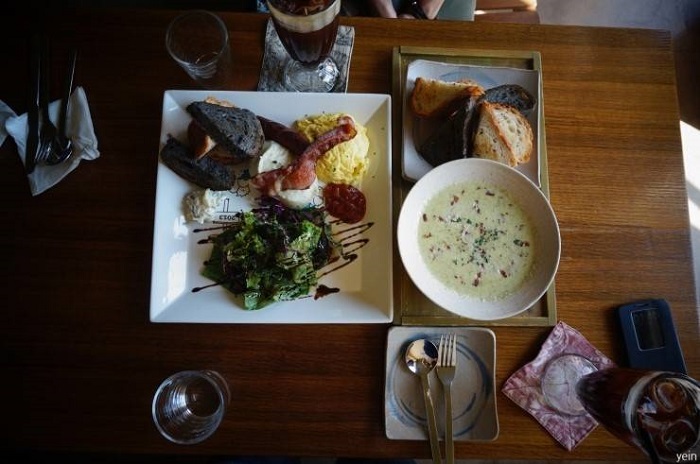

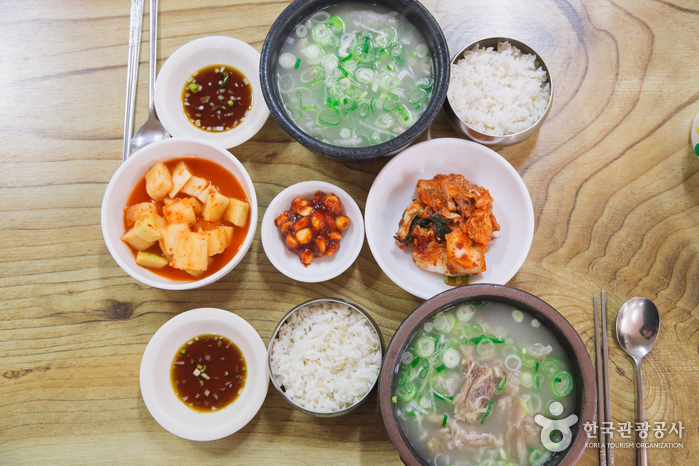
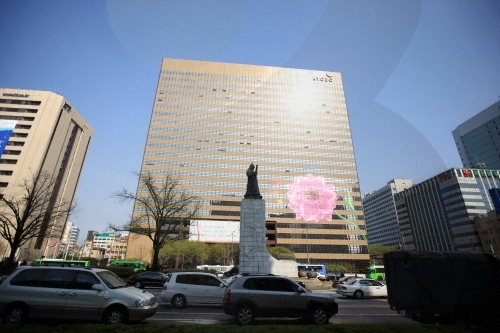
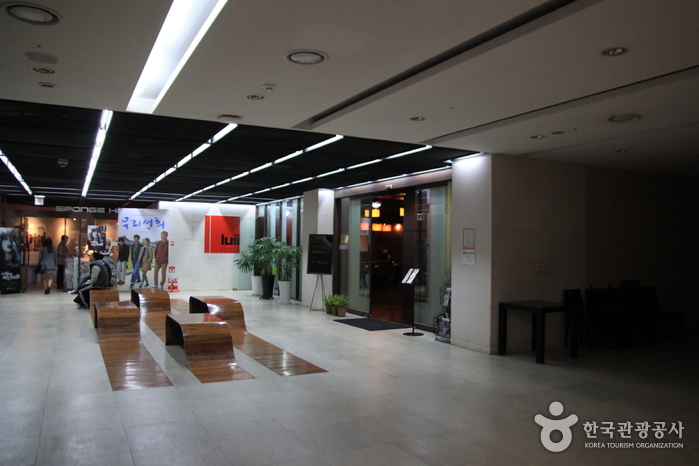
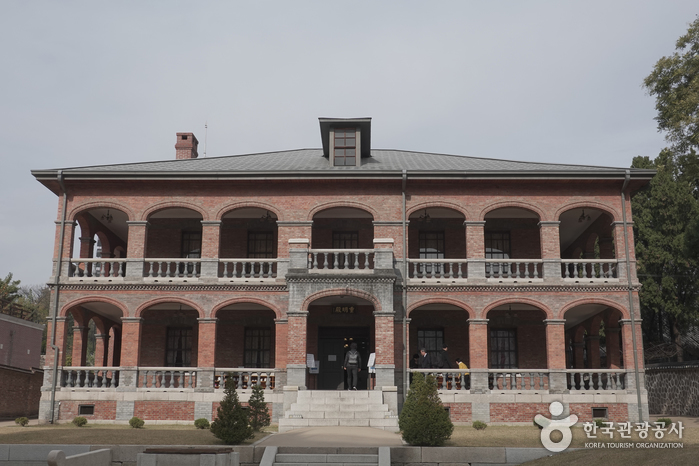
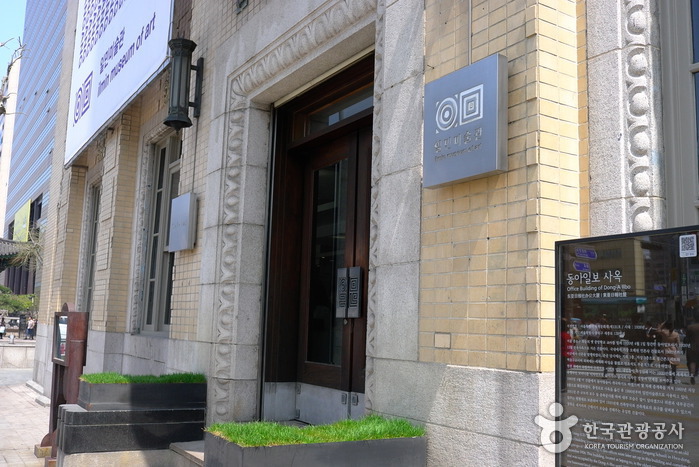
 Español
Español
 한국어
한국어 English
English 日本語
日本語 中文(简体)
中文(简体) Deutsch
Deutsch Français
Français Русский
Русский